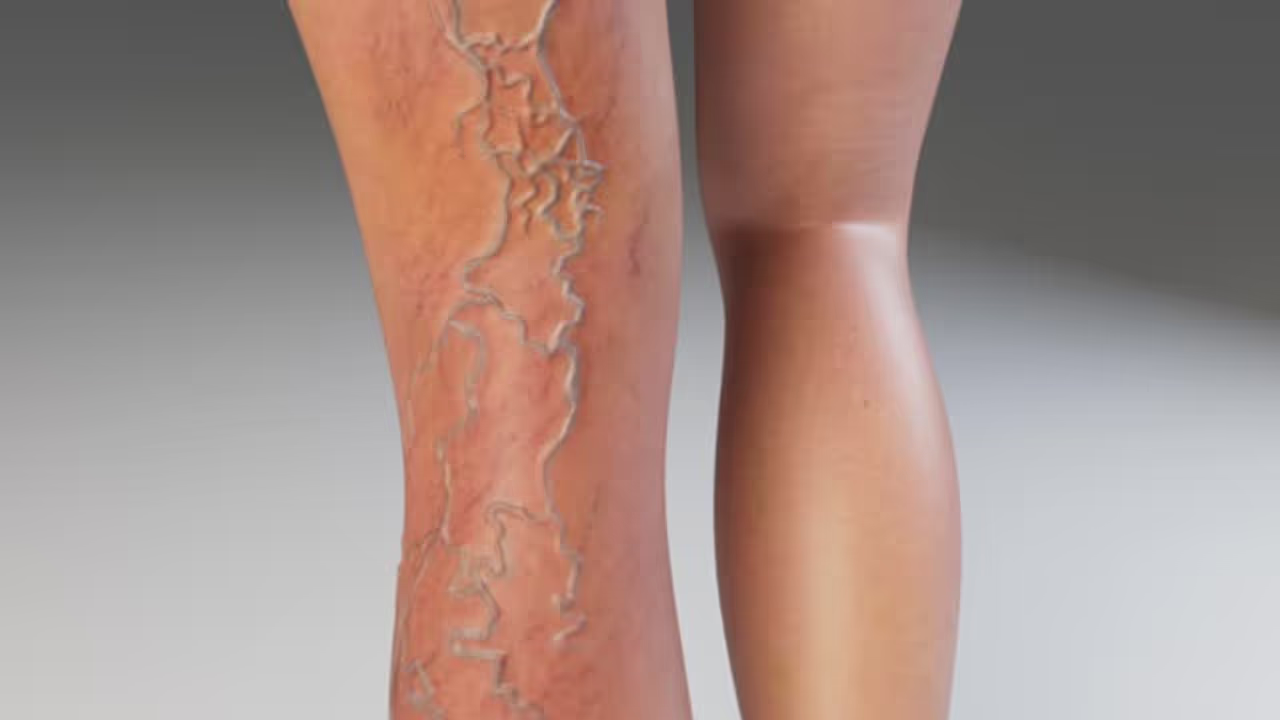Varicose veins are swollen, twisted veins often seen in the legs. They can cause discomfort and health issues if untreated. Early care and lifestyle changes can help manage and prevent complications.
We have noticed that our legs have blue or purple veins that are bulging and twisted. Varicose veins are what they are called, and they can be more than just a cosmetic problem. If you don't treat them right away, they could cause pain, swelling, changes in the skin, or even ulcers.

What are varicose veins?
Varicose veins are veins that have gotten bigger because the valves that let blood flow backward and pool, especially in the legs, have become weak or broken. The result is swollen veins that can be seen and may hurt.
Why do they happen?
Several risk factors can cause varicose veins:
- Age: As people get older, their veins become less flexible.
- Gender: Women are more likely to get it, especially if they are pregnant or have hormonal changes.
- Family History: A genetic trait
What Causes Them?
Vein varicosity is caused by many risk factors:
- Age: As we age, our veins become less elastic.
- Gender: Women are more vulnerable, particularly as a result of hormones or pregnancy.
- Family History: There is frequently a genetic component.
- Extended Standing/Sitting: Jobs requiring little mobility may put more strain on veins.
- Obesity: Vein strain is caused by excess weight.
- Inactivity: The condition is made worse by poor circulation
- Early Signs to Look Out for
- Legs that hurt or feel heavy
- Foot or ankle swelling
- Burning, itching, or cramping feelings
- Veins that protrude visibly
Easy Home Repairs
Making lifestyle adjustments early on can help stop things from getting worse:
- Remain Active: Blood flow is enhanced by swimming, cycling, and walking.
- Lift Legs: Lowering the legs above the level of the heart lowers blood pressure.
- Put on compression stockings, which lessen swelling and increase circulation.
- Preserve a healthy weight: Promotes vein health.
- Take Breaks from Standing and Sitting: Get up and move every 30 to 60 minutes.
When to Get Medical Advice
See a vascular specialist if you have open sores, skin discoloration, or chronic leg pain. Chronic venous insufficiency is one of the complications that can result from varicose veins if they are not treated.
Advanced Medical Care Is Available
Today's treatments are minimally invasive because of medical advancements.
- Radiofrequency or laser therapy
Sclerotherapy (vein-closing injections) and outpatient surgical options
These treatments provide long-lasting relief and a speedier recovery.
Particularly with today's sedentary lifestyle, varicose veins are common. Avoid waiting for symptoms to get worse. You can maintain the health and pain-free condition of your legs with prompt care and minor lifestyle adjustments.
Article by - Dr. Jitendra Nath Patnaik, Senior Consultant - Cardiothoracic Vascular Surgery, Manipal Hospital Bhubaneswar


